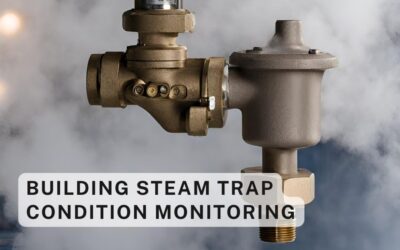When the weather is cold, your boiler system is working its hardest to generate steam to run your processes. Any losses through faulty steam traps are a waste of money. Often times a business will spend significant capital to add boilers when they could easily increase the efficiency of the current system. Inspecting and repairing faulty steam traps can lead to big savings.
Here are five reasons your steam system may not be operating at its optimal performance and what you can do about it.
1. You don’t have a predictive maintenance plan – A well constructed predictive maintenance plan should include regularly scheduled inspections of your steam traps. When a faulty trap is discovered, it should be repaired or replaced. ATS believes there is no such thing as a small leak. If it leaks, it is losing steam and increasing your expenses. Fix the problem and stop any leaks before they cost you more money.
2. Out of sight, out of mind – In most production facilities steam traps are located close to the ceiling; usually about 25 or 30 feet from the ground. You don’t see these every day and will be unaware of their condition unless it’s part of a predictive maintenance program.
3. The cold weather makes your system work harder – As the weather gets colder, your boiler system has to work harder to satisfy steam demand. You’re going to be sensitive to higher power bills during the winter season. The last thing you want to do is bring another boiler online to compensate for the lost steam through faulty traps.
4. It’s time consuming to check steam traps for leaks – The traditional method of monitoring traps is to manually cycle the valve to determine the condition. More modern technologies such as ultrasonic leak detection are also effective. However, these strategies can be time consuming and labor intensive. Many traps are 25-30 feet above ground level and require a lift to access. This can mean a significant time investment is needed to access traps across an entire facility. Because of the time investment, most businesses do not perform steam trap inspections often enough. Consequently, they don’t repair or replace them often enough either.
5. Maintenance departments have limited resources – Traditional methods of checking traps can be costly and inefficient. Most facilities cannot afford to have their staff occupied with lengthy steam trap surveys. In many cases, these traps are ignored for a significant amount of time, leaving them functioning at a less than optimal capacity.
A predictive maintenance plan is the first step in keeping your steam system in optimal condition. Some facilities have their own predictive maintenance plans while others benefit from hiring a company like ATS to do it for them. Our PdM programs are customized for each individual facility, based on their specific needs. We have also designed a proprietary online reporting system that puts our customers in complete control. Their pertinent information is available to them at all times and in a variety of formats. We’ll analyze the data and provide customized and detailed reports, complete with specific recommendations. You will have everything you need to make the maintenance decisions that save you downtime and money.
ATS’s method for inspecting steam traps is very efficient. We utilize infrared technologies from the ground floor to determine the condition, based on temperature differential between the inlet and outlet piping. This allows the scan to be completed much faster and at a lower cost. With our cameras, we can inspect each trap safely and quickly, while determining which ones are not performing adequately. This makes locating and repairing these traps more time and cost efficient.
If you think your facility can benefit from a thorough steam trap inspection or other predictive maintenance services, give us a call, or contact us through our website. We’ll be happy to meet with you for a free consultation.






0 Comments